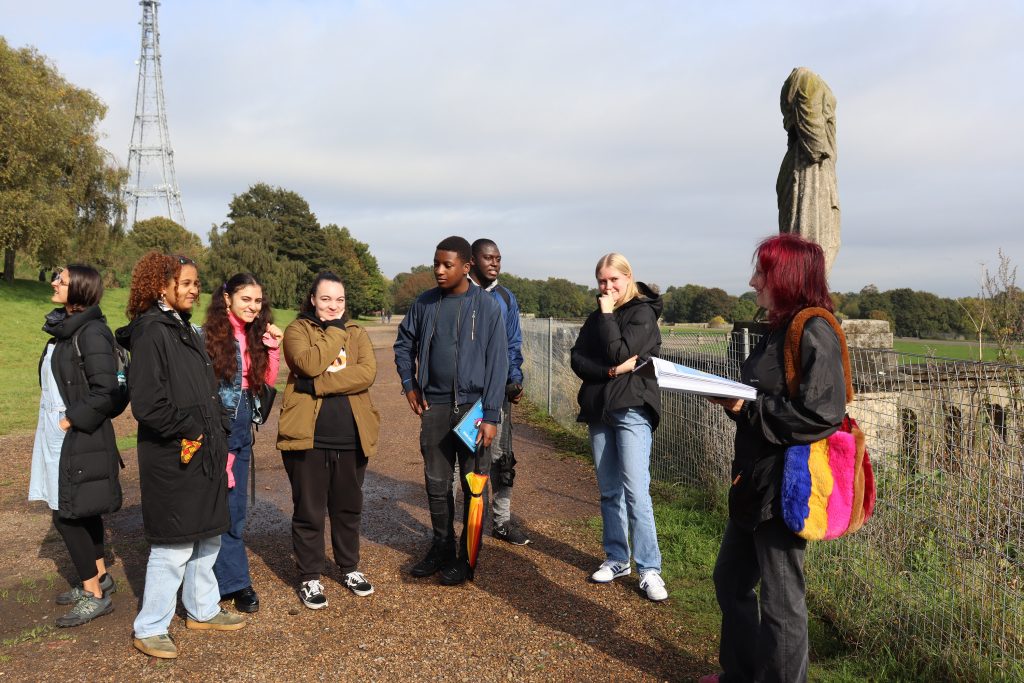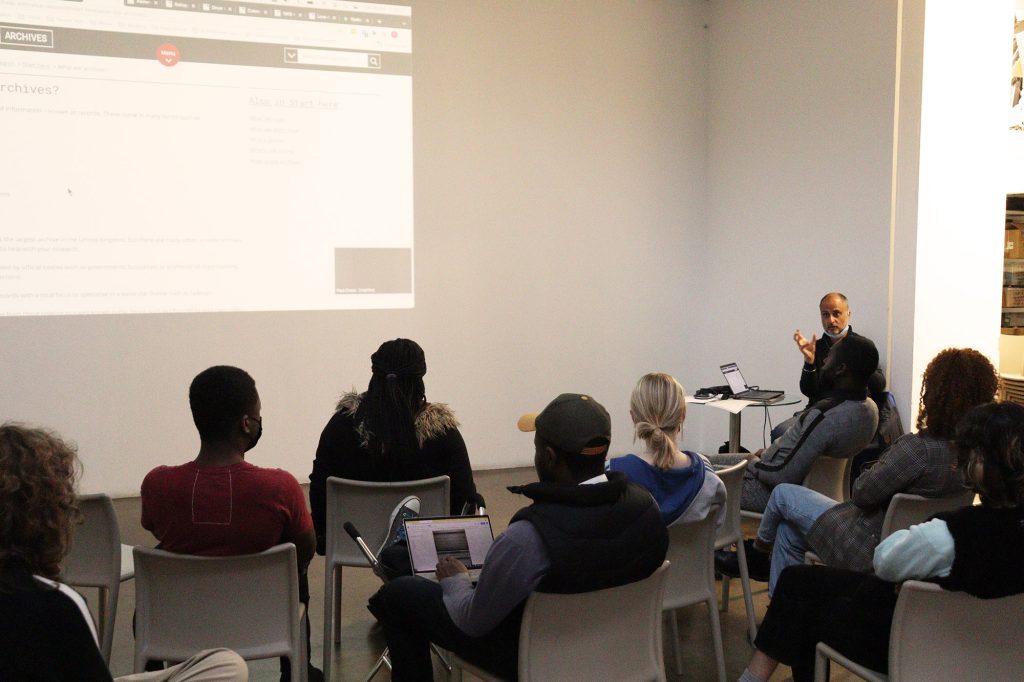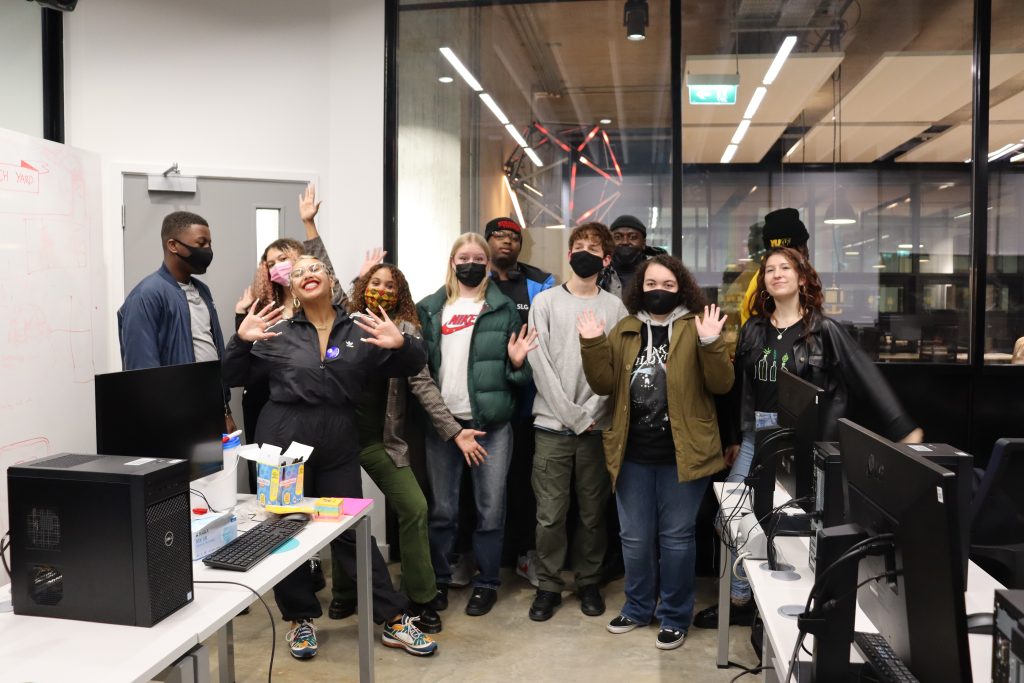
Art Assassins responding to 1911 Festival of Empire research through collage
Paul Crook and Tommie Introna run Art Assassins, the South London Gallery’s young people’s forum for 14-21 year olds. They have been working on Places Never Seen: A Youth Led Investigation of the 1911 Festival of Empire since September 2021. They picked out five key moments from the Art Assassin’s exploration into the archive and digital world-building.
Taking place in The Crystal Palace at Sydenham Hill, the 1911 Festival of Empire included exhibits, sporting events and more. It was designed to inspire pride and wonder in the British Empire. Places Never Seen: A Youth Led Investigation of the 1911 Festival of Empire invites young people to take the lead in examining the history of the festival, presenting a unique opportunity to explore new perspectives from within the modern context. Read on to find out more about the project and visit the Art Assasins’ new digital world, created in response to their research.
1. Crystal Palace Park Sculpture Tour with Invisible Palace

For the majority of the Art Assassins, the trip to Crystal Palace Park was their first time visiting the site and it really helped to contextualise the sheer scale of the 1911 Festival of Empire. Dawn and Sue from Invisible Palace led us on a tour of the mysterious sculptures that remain dotted around the park that date back to the original Crystal Palace and the Great Exhibition. Although there are no traces of the 1911 Festival in the park today, the Art Assassins were struck by the figurative sculptures that were intended to ‘represent’ different countries and continents. This echoed what Lucy Panesar had told us about how the 1911 Festival used art and design to celebrate Britain’s colonial conquests. Spending time with the sculptures and the discomforting context in which they were made, now standing in a busy park filled with families and joggers, sparked much debate and conversation amongst the group. This felt like an important moment; experiencing the legacies of British colonialism as a ghost in the present, not hidden away in a dusty archive.
2. What is an archive? Workshop with Iqbal Singh

Iqbal Singh, Regional Community Partnerships Manager at the National Archives, led a guest workshop for the Art Assassins. Iqbal introduced the group to the fundamentals of archiving and the role of the National Archives. He also spoke about his work in theatre, sharing how creative practices can be used to approach sensitive subjects and give voice to those that have been marginalised. A highlight of the workshop was when Iqbal gave the Art Assassins a copy of an incredibly moving letter written by James Gillespi, a Jamaican sailor living in Barry in Wales, during the 1919 race riots. The Art Assassins analysed the letter, first in its original handwritten form, then as a typed transcription, and finally they listened to the letter read aloud by an actor. The activity showed us how the presentation of historic materials can impact our interpretation of them. It also demonstrated the raw power of personal stories that can be unlocked when working with archives.
3. Wikipedia training: Workshop with Lucy Panesar
An important part of the Places Never Seen project, was to equip Art Assassins with skills and knowledge to edit Wikipedia pages themselves. Lucy Panesar, Wikimedian-In-Residence at University of the Arts London and Stuart Prior from Wikimedia UK shared their expertise and led on this training. Lucy’s presentation emphasised the urgent need to diversify the Wikipedia editing community, highlighting the lack of women and young people currently involved, particularly those from global majority ethnicities. An important takeaway for the group was that there is a specific style of writing required for contributing to Wikipedia, a ‘neutral voice’. This became part of an ongoing wider conversation about working with materials relating to the 1911 Festival of Empire in our project. How can someone write neutrally about a subject when it is personally and emotionally charged. Why should they? How can we make space on Wikipedia for responses that go beyond the ‘neutral voice’?
4. Digital storytelling: Workshop with Jazmin Morris

Digital storytelling and world building was an important part of the Places Never Seen project. Jazmin Morris, a Computing Artist and Educator based at University of the Arts London, opened up a world of possibility by introducing Art Assassins to free digital online platforms including Tinker CAD and FrameVR. Jazmin’s expertise helped with technical instruction but also opened up conversations and thinking around issues of gender, race and power in digital technology. The workshops with Jazmin were key in helping to forge the idea for a collaborative ‘digital world’ created by the Art Assassins that became the main output of the project.
5. Digital world building

Following all of these incredible and rich workshops, the Art Assassins created a new immersive digital world on FrameVR. This virtual world tells the story of the Places Never Seen project and shared the group’s research into the 1911 Festival of Empire. The group split into teams to build sections of the world and were guided by researchers and Art Assassins alumni Harriet Vickers and Sam Baraitser Smith. They decided to appropriate the ’All-Red Route’ as a way to guide visitors. The ’All-Red Route’ was a long-distance shipping route used by Royal Mail to carry post across the British colonies. In the 1911 Festival of Empire the All-Red Route was reimagined as a train ride attraction that transported members of the public through displays of the British territories. The Art Assassins’ own virtual world features all of the materials that came out of the project including collages, archive materials, 3D and clay sculptures.
Check it out for yourself here: Framevr.io/places-never-seen
This project was supported by The Audience Agency’s Digitally Democratising Archives project thanks to funding from DCMS and the National Lottery as part of The National Lottery Heritage Fund’s Digital Skills for Heritage Initiative.